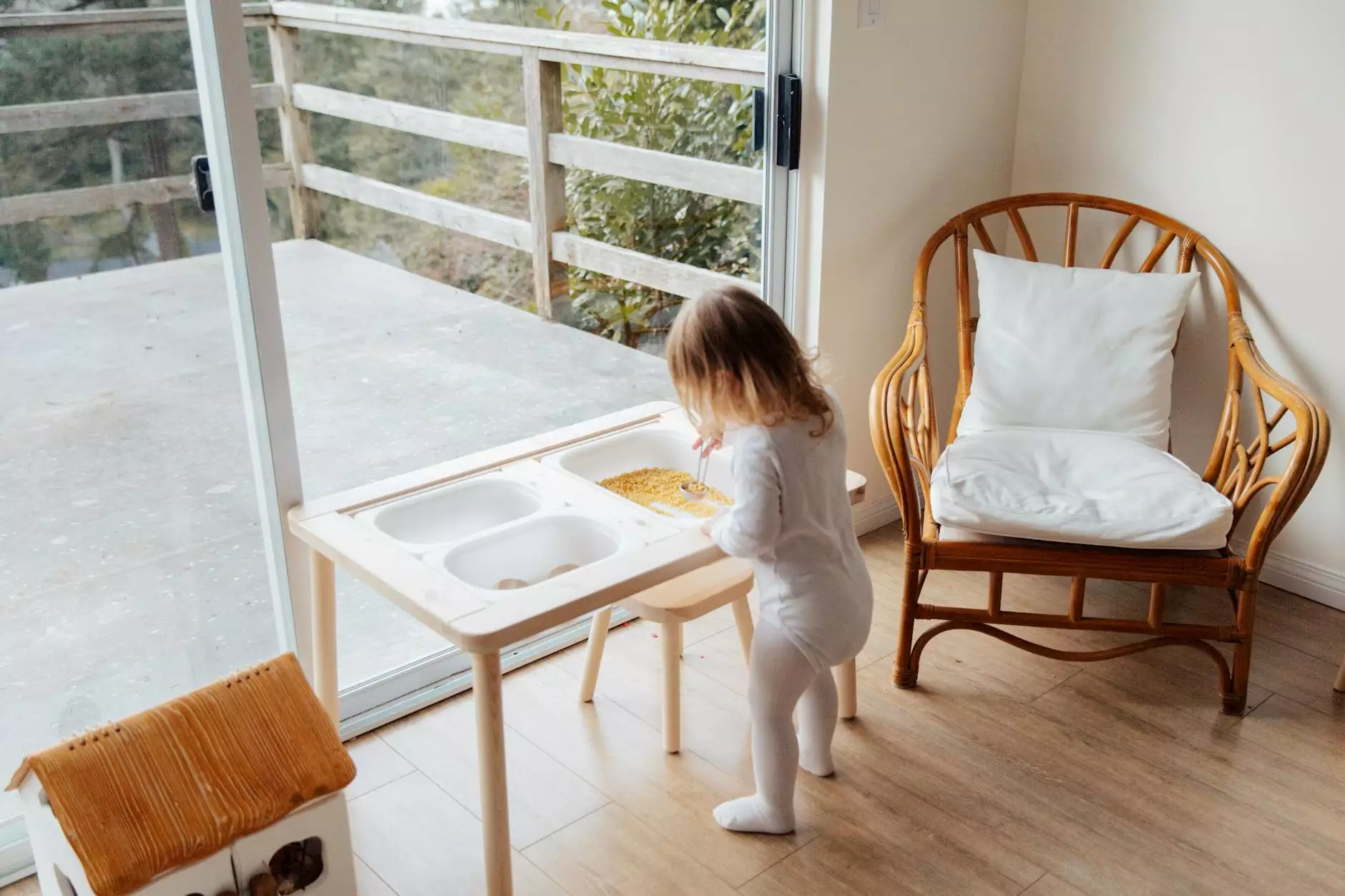Sensory Garden Play

Introduction
Welcome to The Knowledge Nest's comprehensive guide on sensory garden play. In this article, we dive into the world of sensory gardens and explore their benefits for individuals in community and society. Discover how sensory gardens can enhance sensory development and provide a unique sensory experience for everyone.
What is a Sensory Garden?
A sensory garden is a specially designed outdoor space that stimulates the senses. It is created with the intention of engaging individuals in sensory exploration, relaxation, and interaction with nature. Sensory gardens are particularly beneficial for children, individuals with sensory processing disorders, and those seeking a therapeutic environment.
The Benefits of Sensory Garden Play
Sensory garden play offers numerous benefits, both for children and adults. It stimulates the senses, encourages physical activity, and provides a calming and soothing environment. Here are some key benefits of engaging in sensory garden play:
1. Sensory Stimulation
Sensory gardens provide a diverse range of textures, colors, scents, and sounds that engage the senses. This stimulation can enhance sensory processing skills, improve focus, and promote cognitive development.
2. Relaxation and Stress Relief
The tranquil atmosphere of a sensory garden promotes relaxation and stress relief. Immersion in nature, surrounded by calming sights and sounds, can help reduce anxiety levels and provide a sense of peace and well-being.
3. Physical and Motor Skills Development
Activities in sensory gardens often involve movement, balancing, and coordination. Engaging in these activities can improve motor skills, enhance physical strength, and promote overall physical development.
4. Communication and Social Interaction
Sensory gardens offer opportunities for individuals to engage with others and communicate through sensory experiences. This interaction fosters social skills, empathy, and a sense of belonging within the community.
5. Therapeutic Benefits
For individuals with sensory processing disorders, sensory garden play can provide therapeutic benefits. The controlled multisensory environment helps individuals regulate their sensory responses, reducing sensory overload or hypersensitivity.
Creating a Sensory Garden
Designing a sensory garden requires thoughtful planning and consideration of the sensory experiences you want to offer. Here are a few essential elements to incorporate:
1. Texture and Touch
Include various textures, such as smooth stones, rough bark, and soft grass. Incorporate touch-sensitive plants like lamb's ear or moss for a tactile experience.
2. Scent and Aroma
Add fragrant flowers, aromatic herbs, and scented shrubs to provide a delightful olfactory experience. Consider plants like lavender, rosemary, or jasmine.
3. Visual Stimulation
Choose plants with vibrant colors and visually appealing features. Incorporate elements like colorful signage, wind chimes, or ornamental structures to enhance visual interest.
4. Soundscape
Create a soundscape with elements like wind rustling through leaves, water features, or musical instruments designed for outdoor use. These sounds can be soothing and calming.
Sensory Garden Play Activities
Engaging in various activities within a sensory garden further enhances the sensory experience. Here are some activity ideas:
1. Nature Art
Encourage individuals to create art using natural materials found in the sensory garden, such as fallen leaves, flowers, or pebbles. This activity stimulates creativity and enhances fine motor skills.
2. Planting and Gardening
Get individuals involved in planting and maintaining the sensory garden. This hands-on activity promotes a sense of responsibility, fosters a connection with nature, and offers opportunities for learning about plants and ecosystems.
3. Sensory Walks
Organize guided sensory walks to explore different sections of the garden. Encourage participants to actively engage with the sensory stimuli present and share their experiences.
4. Sensory Storytelling
Create a storytelling area within the sensory garden where individuals can gather to listen to or share stories. Engaging multiple senses through storytelling can enhance the overall experience.
Conclusion
Sensory garden play offers a multitude of benefits for individuals in community and society. From sensory stimulation to social interaction, relaxation to therapeutic advantages, there is no shortage of positive experiences waiting to be explored. So, create your own sensory garden and embark on a sensory journey like no other!










